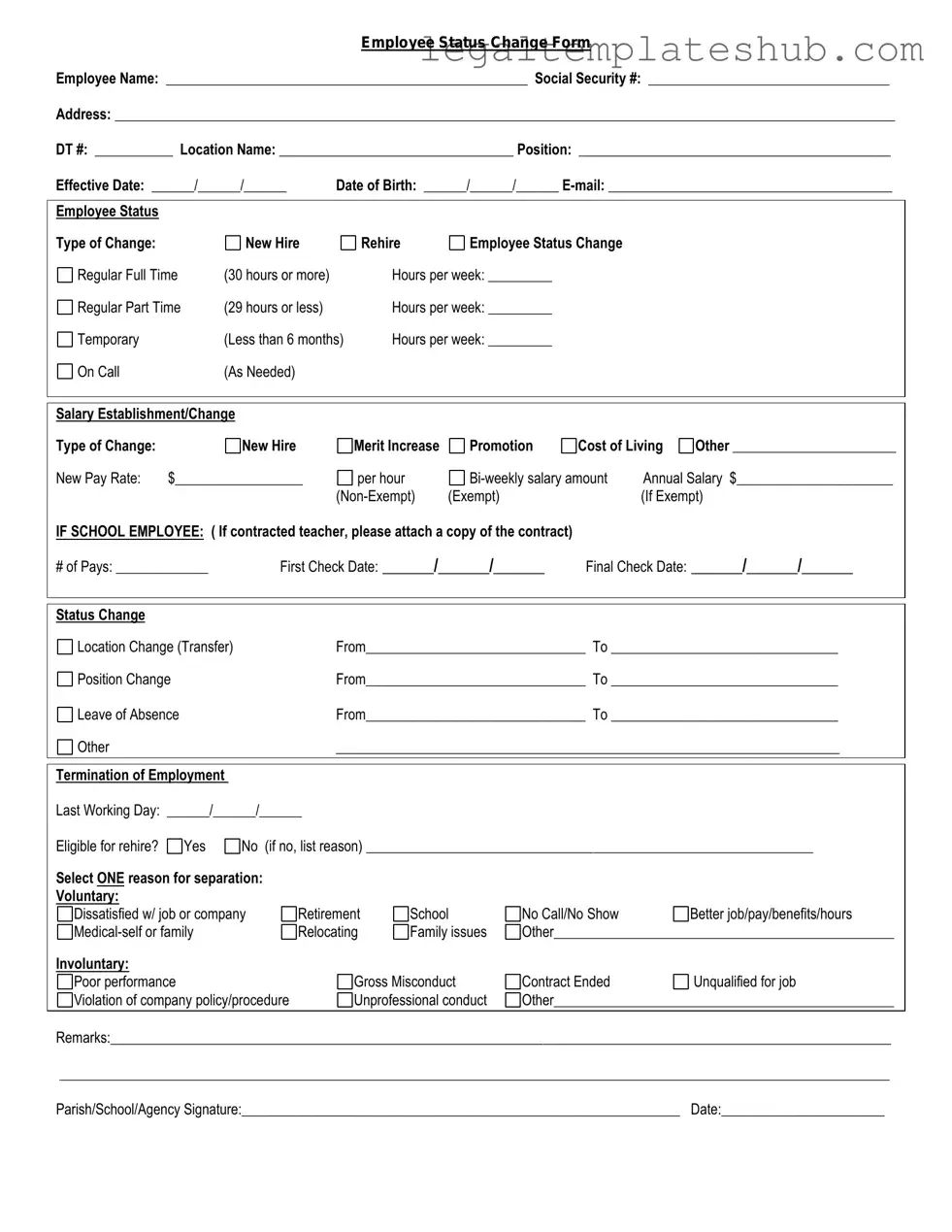Blank Employee Status Change PDF Form
The Employee Status Change form is a crucial document that allows organizations to officially record changes in an employee's status, such as promotions, transfers, or terminations. This form ensures that all relevant departments are informed and can update their records accordingly. To facilitate a smooth transition, it’s important to complete this form promptly; click the button below to get started.
Access Editor
